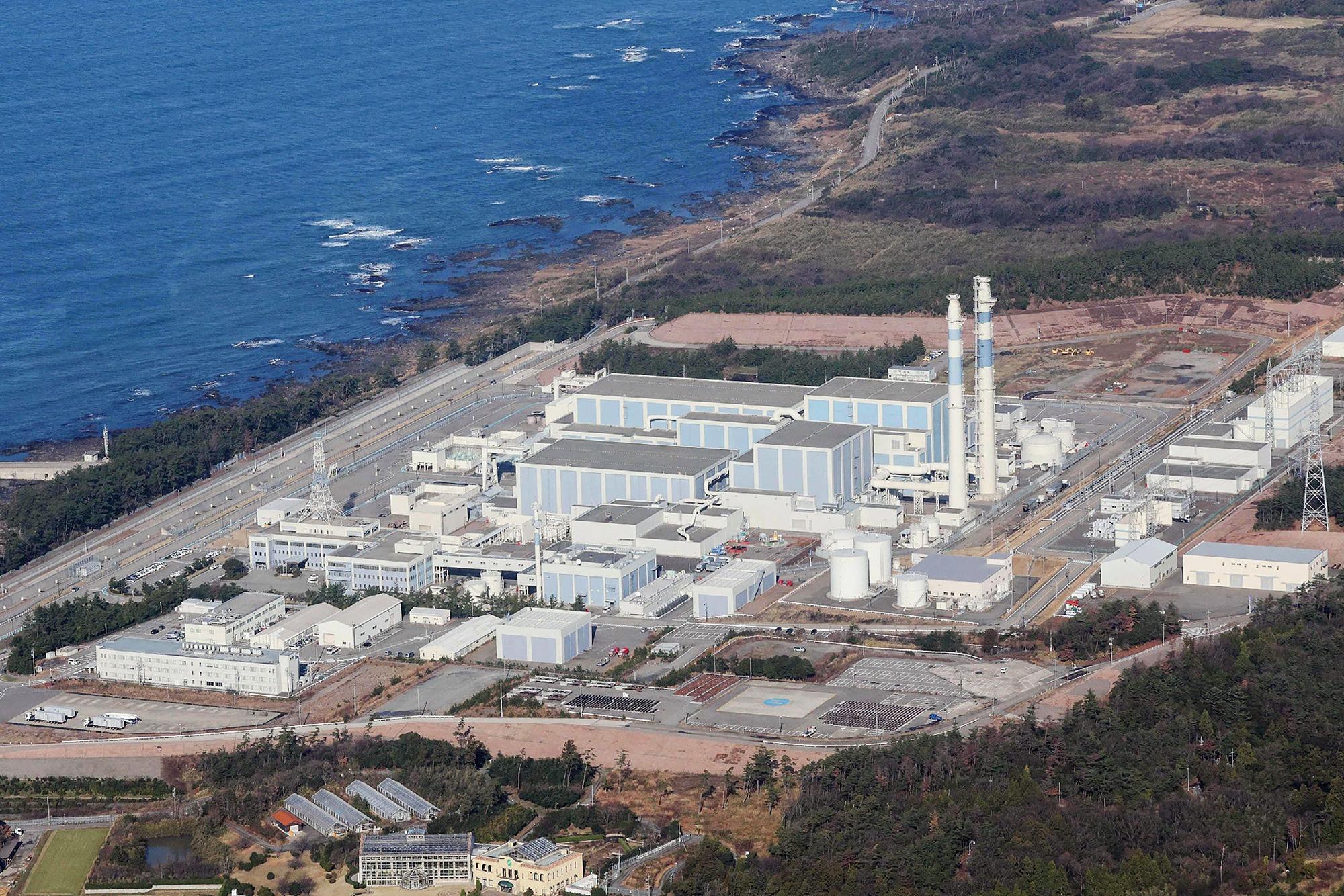 This aerial photo shows the Hokuriku Electric Power Shika nuclear power plant in Shika, Ishikawa prefecture on Jan 2, 2024, a day after a major 7.5 magnitude earthquake struck the Noto region in Ishikawa prefecture. (PHOTO / AFP)
This aerial photo shows the Hokuriku Electric Power Shika nuclear power plant in Shika, Ishikawa prefecture on Jan 2, 2024, a day after a major 7.5 magnitude earthquake struck the Noto region in Ishikawa prefecture. (PHOTO / AFP)
The 7.6-magnitude earthquake that struck Japan's Noto Peninsula, accompanied by widespread tsunami warnings along the Sea of Japan, has reignited public concerns about the safety of nuclear power in the disaster-prone country.
In the earthquake-hit Ishikawa Prefecture, the Shika Nuclear Power Plant, operated by the Hokuriku Electric Power Company, experienced partial disruption to its electricity system, and no major abnormalities have been reported so far.
Following the earthquake, some systems at the plant were nonoperational due to damage sustained by the pipes of transformers responsible for supplying external electricity to the reactors. This damage resulted in oil leaks, Japan's public broadcaster NHK reported.
The plant operator assured that alternative methods were being employed to supply power to critical equipment and recovery efforts commenced on Tuesday, progressing rapidly.
Both Unit 1 and Unit 2 reactors at the Shika plant were offline well before the earthquake.
The Nuclear Regulation Authority, Japan's nuclear watchdog, reported that workers at the Shika plant heard what sounded like an explosion and detected a burning smell near a transformer supplying electricity to Unit 2. Workers investigating the area found the fire extinguishing system had been activated, The Japan Times reported.
Hokuriku Electric Power Company clarified that, upon further investigation, the reported explosion-like sound was a misinterpretation of the operational noise of the equipment, and no fire had occurred.
The Japan Meteorological Agency temporarily issued a major tsunami warning for Ishikawa, where the Shika plant is located, after the earthquake struck on New Year's Day.
Inspecting a water level gauge near a seawater intake, workers discovered that the water level had risen by about 3 meters at the site due to the tsunami triggered by the earthquake. The operator also noted that a 4-meter-high sea wall was installed to protect Unit 1 which was tilting by several centimeters, NHK reported.
Next-generation reactors
Japan is grappling with seismic challenges as the government intensifies its reliance on nuclear power, outlining plans to restart idle nuclear plants and advance the development of next-generation reactors.
Currently, 12 nuclear power plants have officially resumed operations since 2011. Five others are undergoing final preparations, having obtained permission to restart. An additional 10 reactors are currently undergoing inspections, potentially paving the way for their restart, The Japan Times reported.
Japan's Cabinet approved a basic policy on Feb 10 last year, outlining a road map for achieving green transformation. The road map emphasizes the pivotal role of nuclear power in ensuring both a stable energy supply and decarbonization.
This approval signals a significant departure from the government's stance on nuclear power since a 2011 earthquake and tsunami led to a triple meltdown at the Fukushima Daiichi Nuclear Power Plant.
Last May, the Diet, Japan's national legislature, eliminated rules stipulating a maximum 60-year operational life span for nuclear reactors.
Considering the frequent earthquakes in Japan, Masashi Goto, a former nuclear engineer who has become critical of the industry, advised the Japanese government to promote the use of renewable energy for power generation, gradually supplanting nuclear power as the primary electricity source.
As of Wednesday afternoon, local officials said 73 people in Ishikawa were confirmed killed in the quake.
jiangxueqing@chinadaily.com.cn


